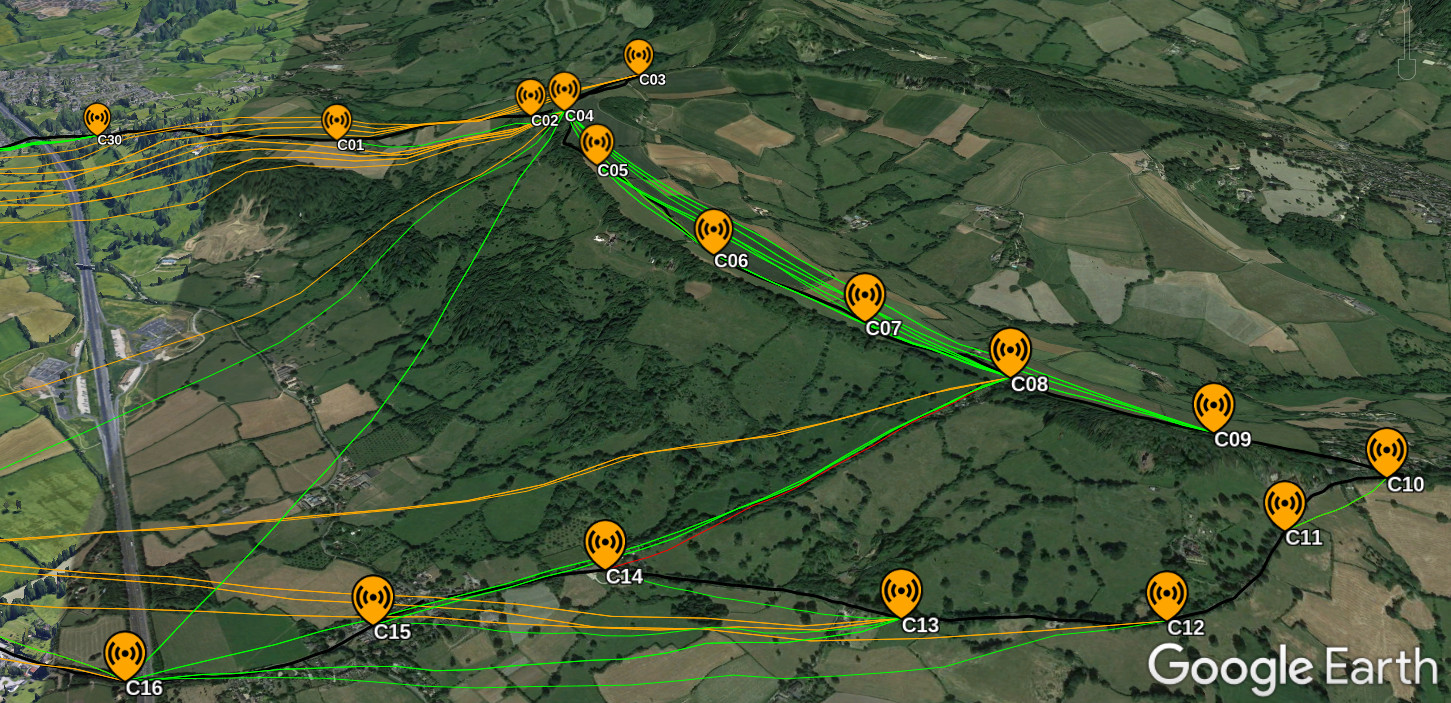
Mobile ad-hoc networks (MANET) are an increasingly popular architecture in emergency services and Defence communications. Unlike classic repeater based networks, MANET radio network communications do not have fixed infrastructure so must form self-healing, self-routing networks.
MANET radio modules are well suited to working either off-grid away in remote areas or for providing resilience and independence in well served cities which may be suffering from power and/or network failure.
The bandwidth requirements and throughput of MANET networks varies substantially by waveform. Some are designed for range, others maximum throughput. For this reason, manufacturers offer a range of frequency modules.
Why RF planning tools don’t get used for emergency networks
RF planning software has evolved substantially in the 30 years it’s been used to build out fixed infrastructure networks. Time sensitive customers such as the emergency services have a difficult relationship with these tools. They need them, and often buy them, but don’t have the time to use them to their full capabilities. As a result they rarely get used on anything except training and exercises. Even then the numbers of staff directly interfacing with them will be very small, even in very large organisations of radio users.
The focus for most RF tools is planning with static sites. Whether that’s clicking on a map or uploading a spreadsheet of hundreds of locations it’s still static. MANET requires dynamic inputs and continuous computation which is where APIs come to the fore…
An API for MANET
Cloud-RF’s latest API has a function designed for ad-hoc networks called ‘points’. The points API functions like a point-to-point profile in terms of it’s input and output except it accepts an array of transmitters. This means you can test 10,50 or 500 transmitter nodes back to a single receiver in a single API call. It’s also fast as you’d expect and can model a link every millisecond so the 870 distinct links demonstrated in the video were processed in under a second, every second.
For more information on the points API see our documentation here: https://docs.cloudrf.com
Radio mapping planning
In this video, we demonstrate the Cloud-RF points API to model a MANET network (Mobile Ad-hoc Network). For this demo 30 nodes were moved around a 16km track covering a variety of terrain. Each node was tested against 29 siblings for a total of 870 links per second.
Coloured links denote good (green) average (amber) and poor (red) links between the nodes and map to 5dB, 10dB and 20dB signal-to-noise ratios. Only links exceeding 5dB SNR are shown or it looks like a bad game of kerplunk!
The radio settings used were L band (1-2GHz) with only 1 watt of power. This conservative start setting was chosen to show a dynamic range of links. Later in the video the template is switched at the database to demonstrate the impact or gain of using different bands such as 2.4GHz and 500MHz.
Integrating your data
The demo video used mock data and an unpublished script to present the results as a KML. The source of the data is irrelevant so long as it’s accurate and time sensitive. This could be a radio vendor’s dashboard or database. Many of the leading vendors such as DTC, Harris, Persistent Systems, Silvus and Trellisware have location aware GPS modules and software interfaces to display reported radio positions.
The required format for a point is WGS84 decimal degrees. The height is taken from the template which is defined within the body of the points request. The new APIv2 makes defining a template easy as a JSON object so you can have a local archive of template .json files.
A suggested workflow for API integration for dynamic points is as follows:
- Fetch a list of all radio locations as decimal degrees
- Choose a template as a JSON object
- Make an API request using the data and a client script to https://api.cloudrf.com/points
- Parse the JSON response to extract the results for each node
- Put the results on a map as lines
- Style the lines based upon your own local rules for your equipment, QoS and waveform eg. < 5dB is red
Download example client scripts from our Github site: https://github.com/Cloud-RF/CloudRF-API-clients
For assistance with integration and hosting options email support@cloudrf.com
Autonomous vehicles
Where this points API will really add value is in mapping and assisting autonomous vehicles who are invariably fitted with MANET radio modules. Whether it’s a drone or a UGV, this API can be used to rapidly exercise multiple routes to help make better decisions.

